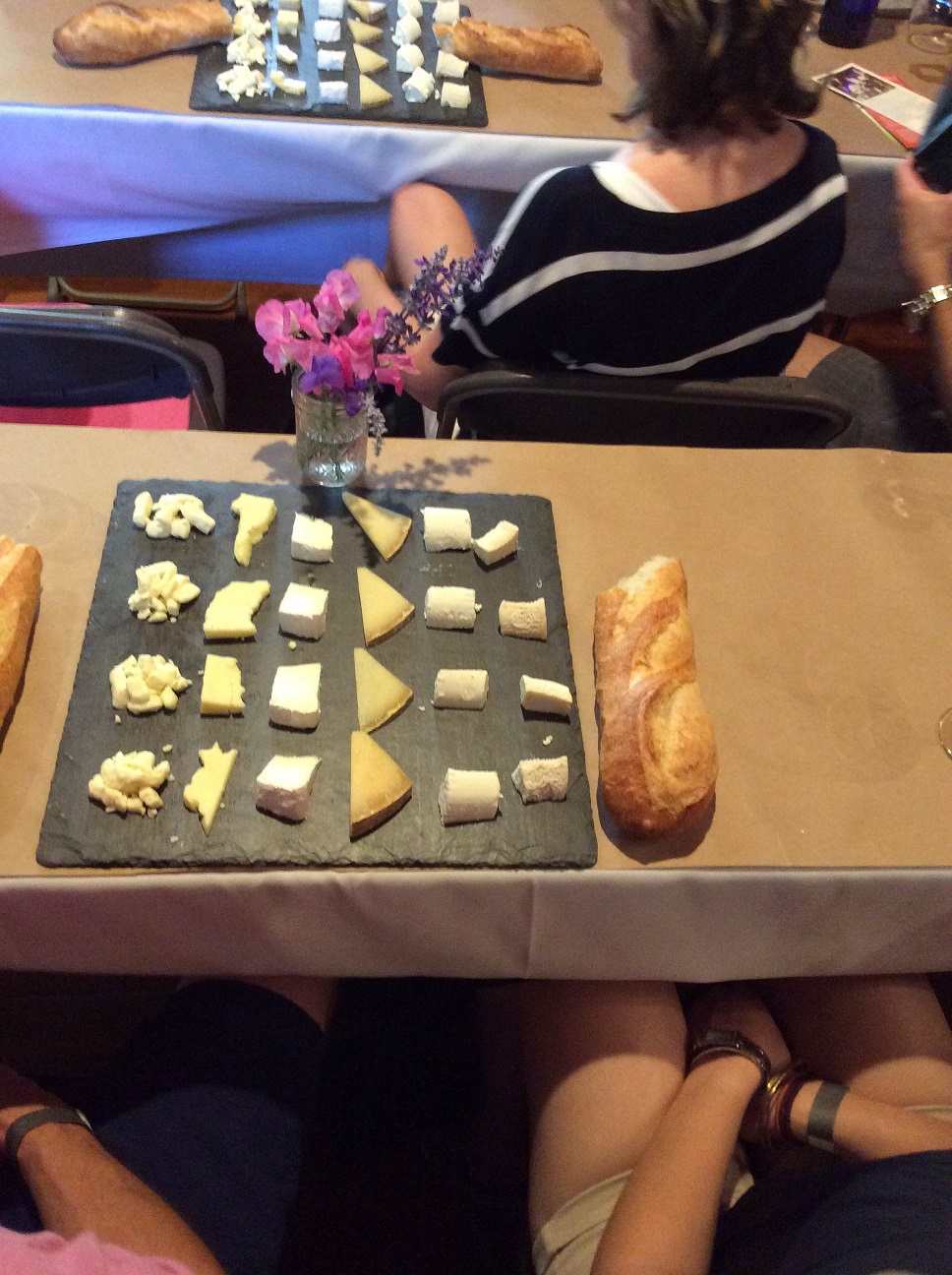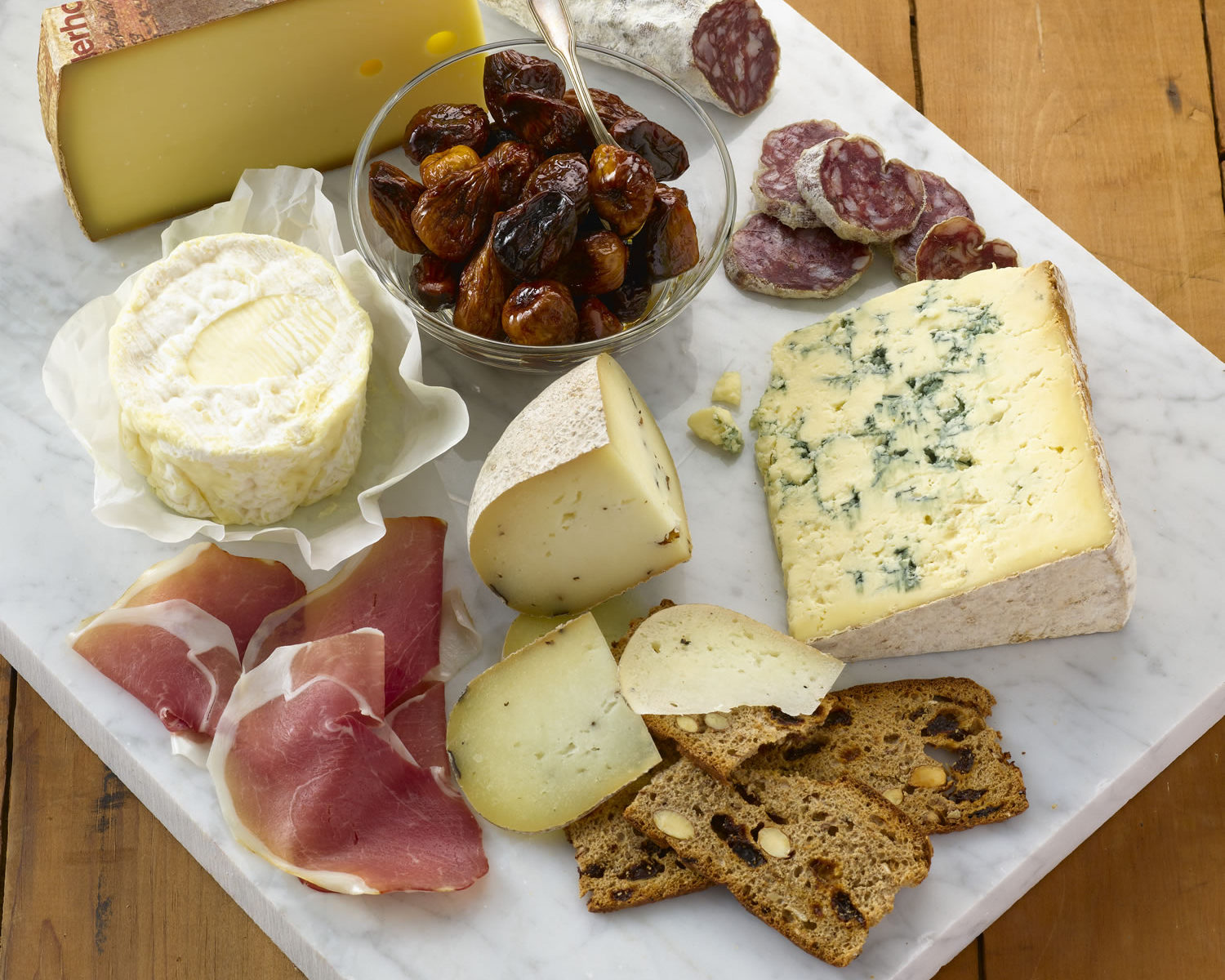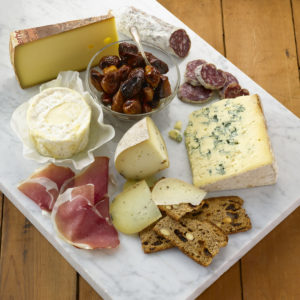Vertical Pairings at the Vermont Cheesemaker Festival
By Caitlin Bower
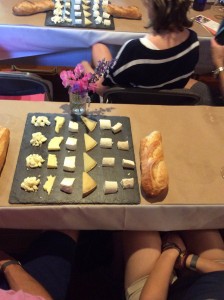
Vertical tasting explores the history of a cheese: how it starts (as milk, as curd, as a fresh cheese, as a toddler) to how it ends up in its final expression. It is the most immediate and accessible way to taste and understand affinage. By eating a cheese at different stages of its development, you taste the flavors that can develop with careful treatment, age and time. While attending July’s Vermont Cheesemaker Festival, I attended a seminar in which three featured cheesemakers chose a different way to explore this process, and with different milk types.
1. Fresh Curd vs. 1 year old (pasteurized and raw cow) – Plymouth Artisan Cheeses
Granular curd cheesemaking is the rare, work-intensive process that Plymouth Artisan Cheese owner, Jesse Werner, was able to showcase with his fresh curd and year-old Plymouth “The Original” side by side. From an 1890’s recipe, the curd was squeaky, delicious and a tiny bit tangy. The “Original” is made with those same curds and has a bright, acidic, cheddary flavor, much altered by age and process.
The Mozzarella Making class at Murray’s also offers the opportunity to taste both curd and cheese, with a fun, hands-on addition of making your own mozzarella in the classroom.
2. Young Bloomy vs Aged Alpine (sheep) – Woodcock Farm Cheese Co
This vertical pair explored the same milk type expressed in two styles: one younger and soft, one older and hard.
Summer Snow vs. the Wheston Wheel – you can even hear it in the name; the first cheese is a delicate, exuberant, young, soft cheese with a tender, slightly squeaky rind while the second is nuttier, sweeter, complex and more robust.
3. Fresh vs. Mold Ripened (goat) – Vermont Creamery

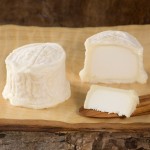
From fresh chèvre to brain like and acidic, the Crottin’s final form is the Bijou. The first cheese has a tiny amount of the geotrichum, which adds a slight yeasty flavor at a day old, develops into a full rind by the second week to become an entirely different cheese. This vertical pairing is a perfect example of how much a cheese can change in just two short weeks, and how both can be delicious in their own right.
Try out a vertical taste test on your own!
Cellars at Jasper Hill: Harbison vs. Cavemaster Reserve Greensward
1 year Comte vs. 2 or 3 year Comte
And for a triple-header, go for the Murray’s Cavemaster trio: Kinderhook Creek vs. Hudson Flower vs. C Local

